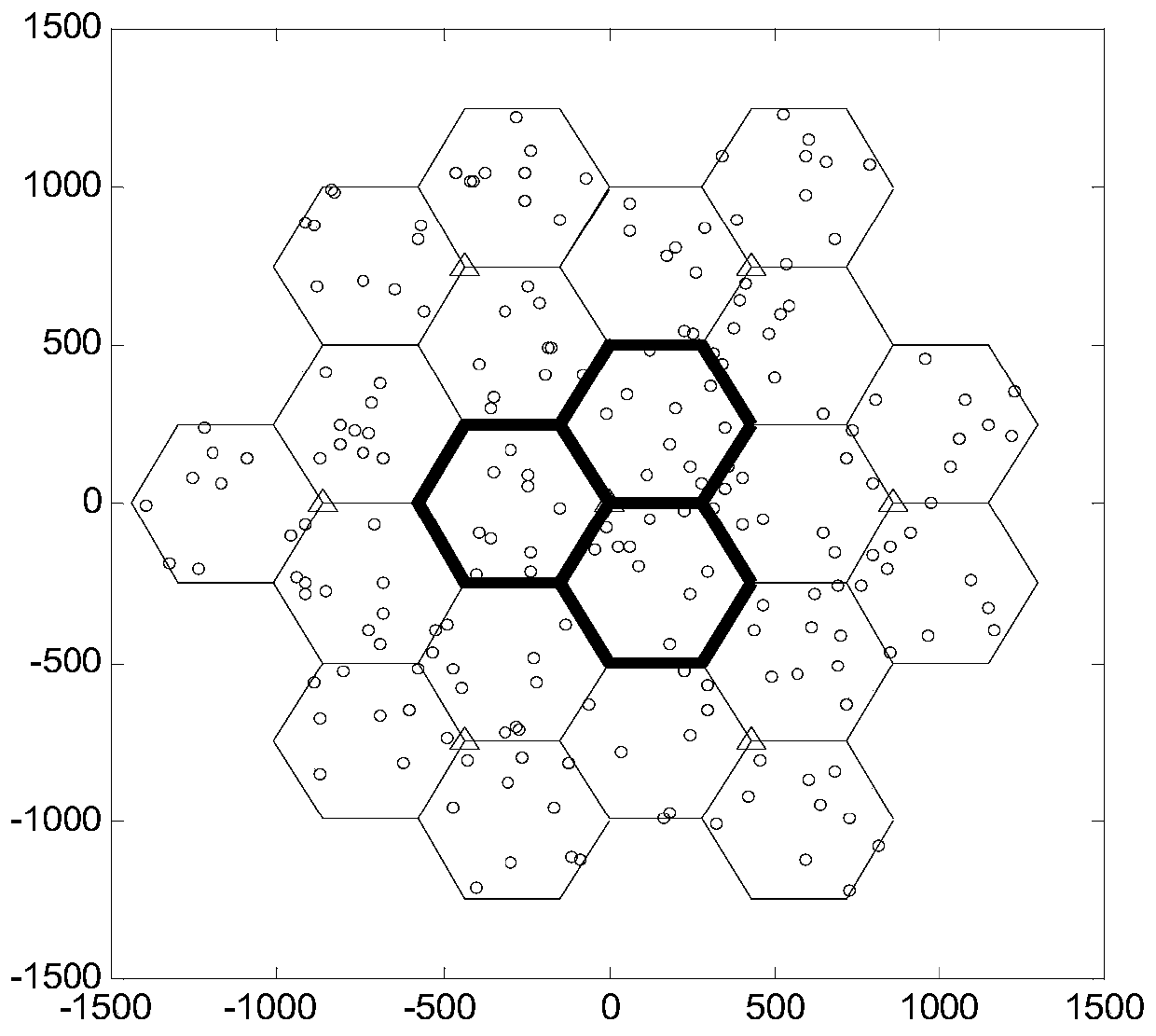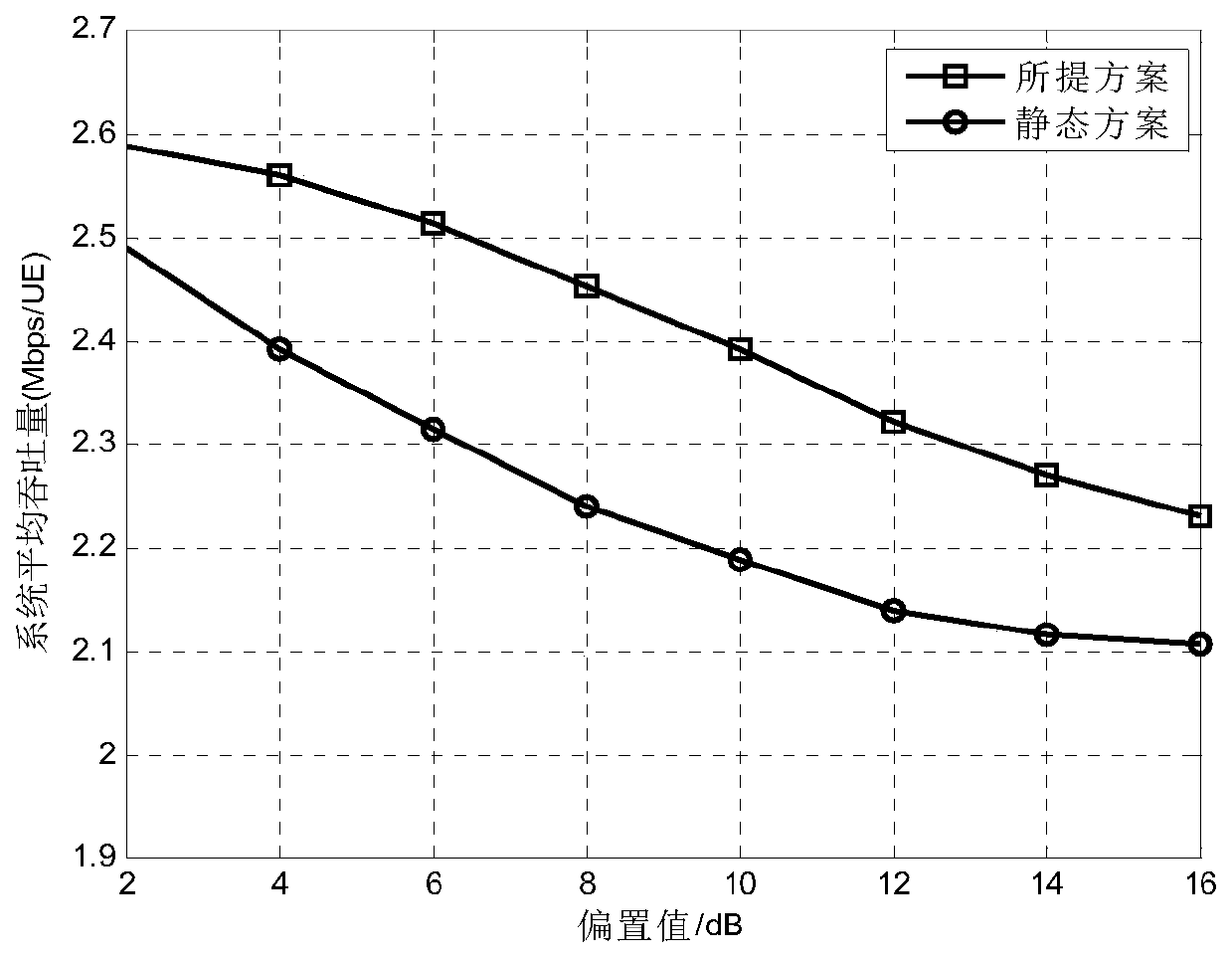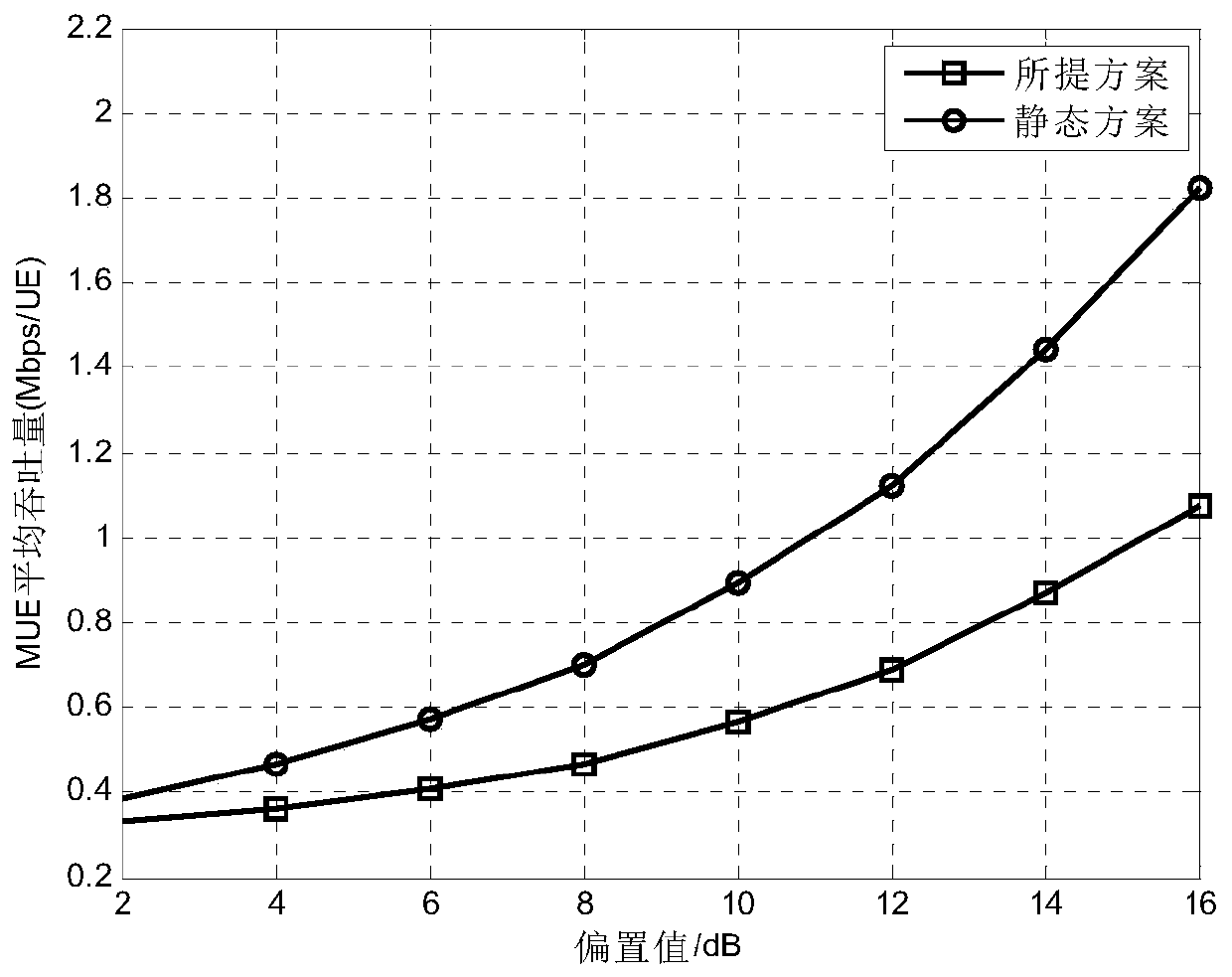Inter-cell resource management and cooperative transmission method based on ultra-dense cellular network
A cellular network and cooperative transmission technology, applied in the field of ultra-dense networking, can solve problems such as interference at the same layer, and achieve the effects of improving performance, eliminating interference at the same layer, and increasing total throughput
- Summary
- Abstract
- Description
- Claims
- Application Information
AI Technical Summary
Problems solved by technology
Method used
Image
Examples
Embodiment Construction
[0045] The present invention will be further described below in conjunction with drawings and embodiments.
[0046] see figure 1 As shown, the present invention is based on a resource management and cooperative transmission method between cells in an ultra-dense cellular network. In this method, there are 3 adjacent hexagonal sectors in the center of each macro base station, and in each sector, evenly distributed N small base stations and K users are uniformly and randomly distributed in each cell. Specific steps are as follows:
[0047] 1) In the user cell selection criteria, a positive offset value is artificially added to the reference signal received power of the small base station, while the received power of the reference signal of the macro base station does not increase the offset value. After the user selects the serving base station, the definition from the macro base station A user joining a small base station is a CRE user.
[0048] Among them, consider a two-la...
PUM
 Login to View More
Login to View More Abstract
Description
Claims
Application Information
 Login to View More
Login to View More - R&D
- Intellectual Property
- Life Sciences
- Materials
- Tech Scout
- Unparalleled Data Quality
- Higher Quality Content
- 60% Fewer Hallucinations
Browse by: Latest US Patents, China's latest patents, Technical Efficacy Thesaurus, Application Domain, Technology Topic, Popular Technical Reports.
© 2025 PatSnap. All rights reserved.Legal|Privacy policy|Modern Slavery Act Transparency Statement|Sitemap|About US| Contact US: help@patsnap.com



